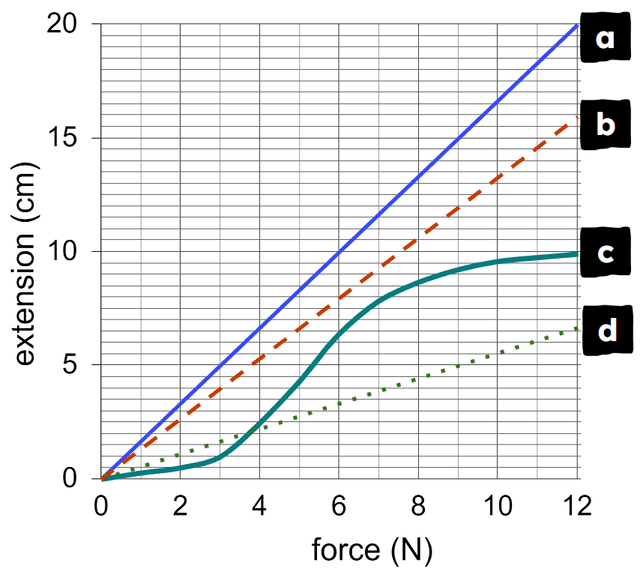Myths about teaching can hold you back
- Year 9
Stretching rubber
I can investigate the extension of a rubber band, and compare the behaviour to that of a spring.
- Year 9
Stretching rubber
I can investigate the extension of a rubber band, and compare the behaviour to that of a spring.
These resources were made for remote use during the pandemic, not classroom teaching.
Switch to our new teaching resources now - designed by teachers and leading subject experts, and tested in classrooms.
Lesson details
Key learning points
- A rubber band is elastic because it returns to its original length when a force is removed.
- The extension of a rubber band increases different amounts for each equal sized increase in force.
- The extension of a spring is not directly proportional to the force applied.
- The extension pattern is explained by the behaviour of molecular chains in the rubber.
Keywords
Extension - The extension of a rubber band is its change in length.
Directly proportional - Variables are directly proportional when one is a constant multiple of the other.
Elastic - A rubber band is elastic; it returns to its original length after forces are removed from it.
Long molecular chains - Rubber contains long molecular chains, that uncoil when it stretches.
Common misconception
Pupils find it challenging to link the shape of a line graph with physical change in the real world.
Compare two sections of the graph, using the amount of extra stretch per newton as a measure of how easy the rubber band is to stretch.
To help you plan your year 9 science lesson on: Stretching rubber, download all teaching resources for free and adapt to suit your pupils' needs...
To help you plan your year 9 science lesson on: Stretching rubber, download all teaching resources for free and adapt to suit your pupils' needs.
The starter quiz will activate and check your pupils' prior knowledge, with versions available both with and without answers in PDF format.
We use learning cycles to break down learning into key concepts or ideas linked to the learning outcome. Each learning cycle features explanations with checks for understanding and practice tasks with feedback. All of this is found in our slide decks, ready for you to download and edit. The practice tasks are also available as printable worksheets and some lessons have additional materials with extra material you might need for teaching the lesson.
The assessment exit quiz will test your pupils' understanding of the key learning points.
Our video is a tool for planning, showing how other teachers might teach the lesson, offering helpful tips, modelled explanations and inspiration for your own delivery in the classroom. Plus, you can set it as homework or revision for pupils and keep their learning on track by sharing an online pupil version of this lesson.
Explore more key stage 3 science lessons from the Hidden forces unit, dive into the full secondary science curriculum, or learn more about lesson planning.

Content guidance
- Risk assessment required - equipment
Supervision
Adult supervision required
Licence
Prior knowledge starter quiz
6 Questions
Q1.Complete the sentence: The increase in length of a spring with a force acting on it is the .
Q2.Which word is used to describe something that returns to its original shape when the forces acting on it are removed?
Q3.What is the extension of this spring when a force of 30 N acts on it?
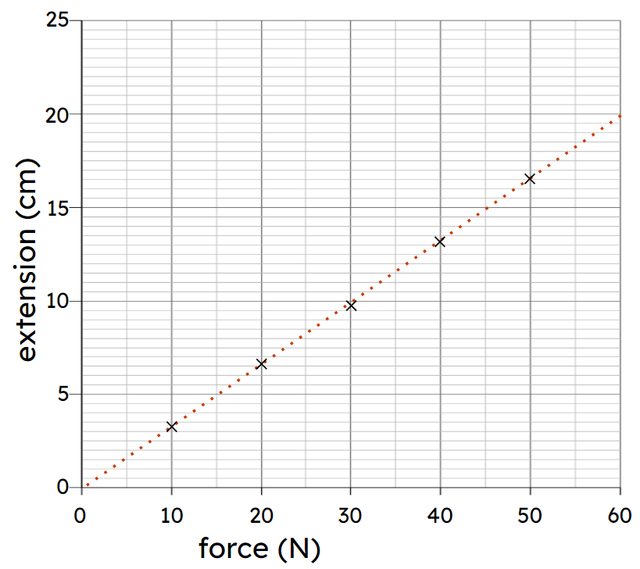
Q4.Which of these is a statement of Hooke's law?
Q5.According to the graph, which of these statements are true?
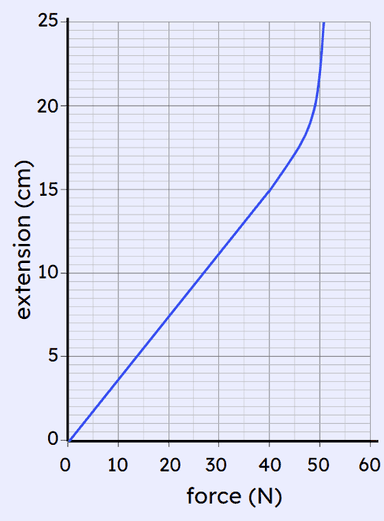
Q6.A pupil collects the data shown during a spring experiment. Use the data to predict the extension if the force used was 8 N. Give your answer in cm to the nearest whole number.
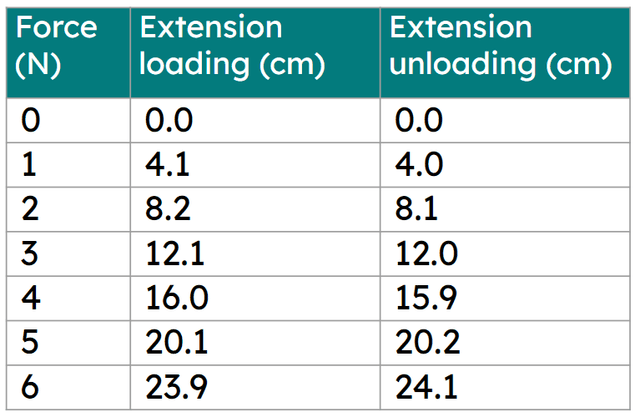
Assessment exit quiz
6 Questions
Q1.Match the keyword or phrase with the explanation.
material returns to its original length after forces are removed
the increase in length when a material is stretched
when one variable increases, the other increases at the same rate
the structure of rubber
Q2.An equal force is applied to both ends of a rubber band. What happens to the rubber band?

Q3.The figure shows a rubber band before and after it has been stretched. What is the extension of the band?
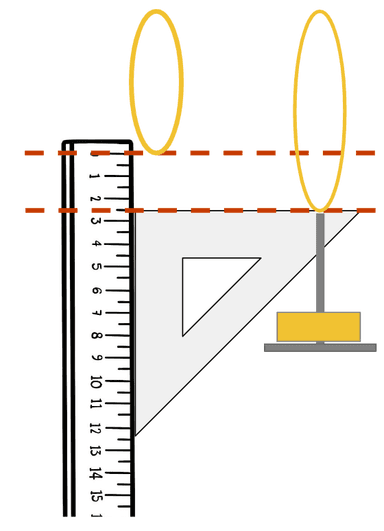
Q4.Which of the lines on the graph shows the extension of a rubber band when a force is applied?
